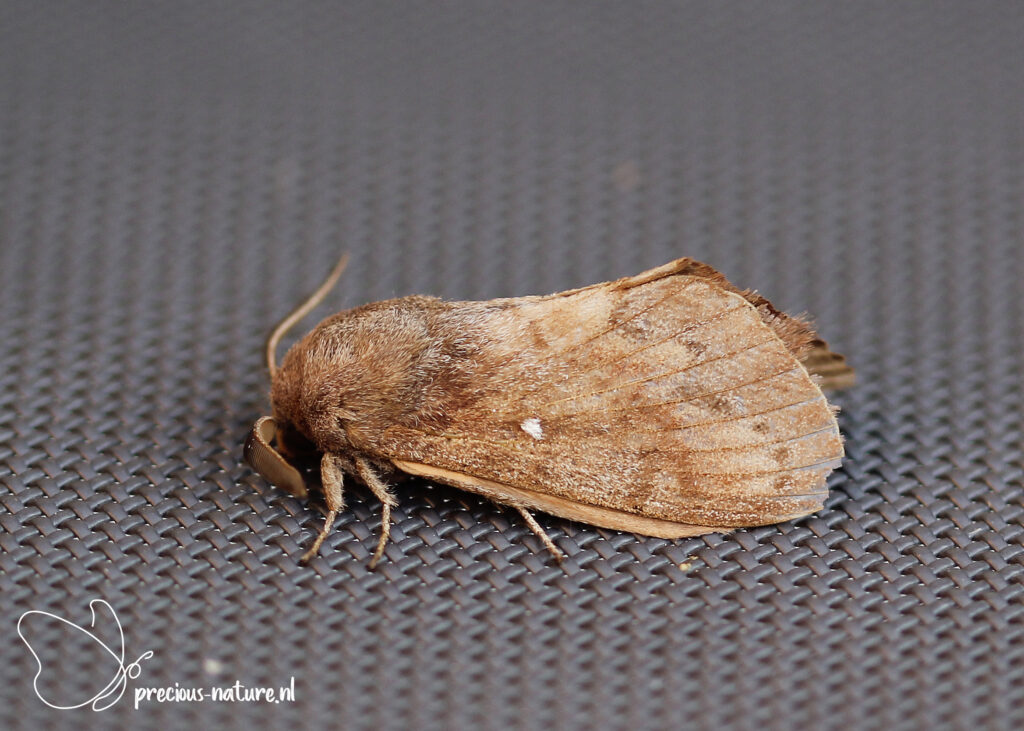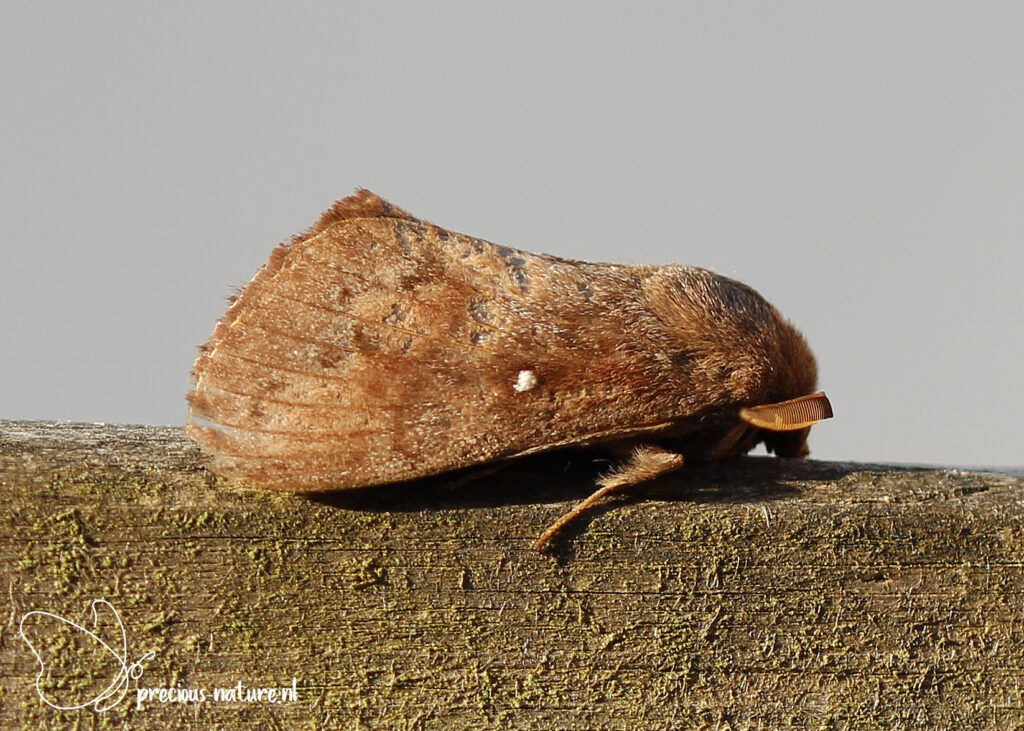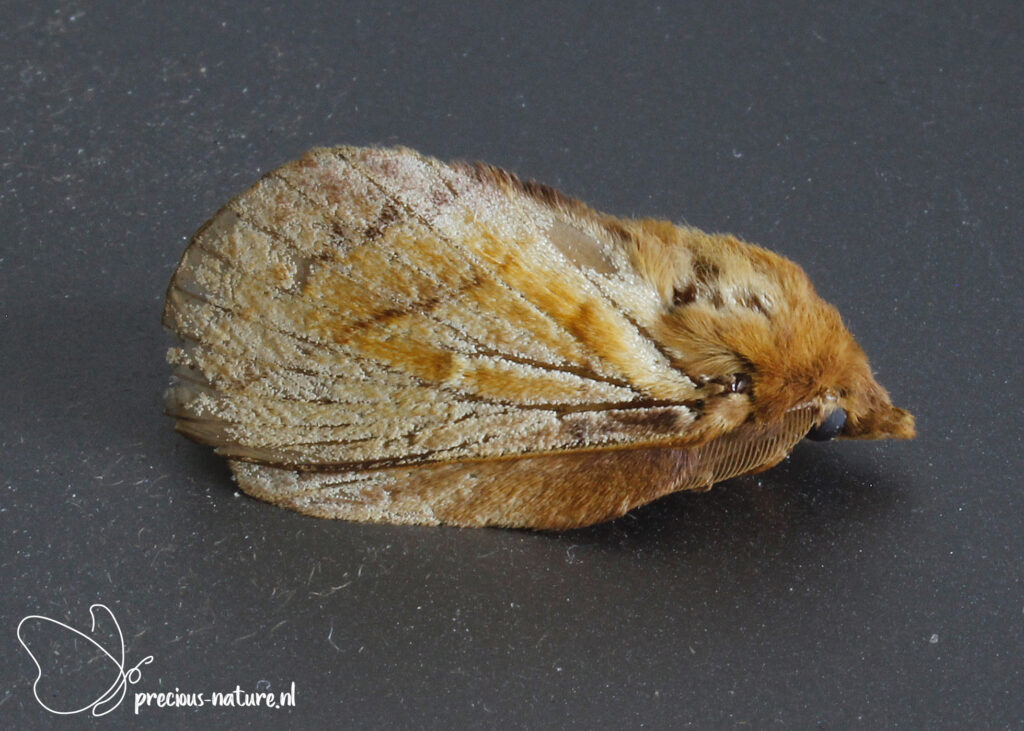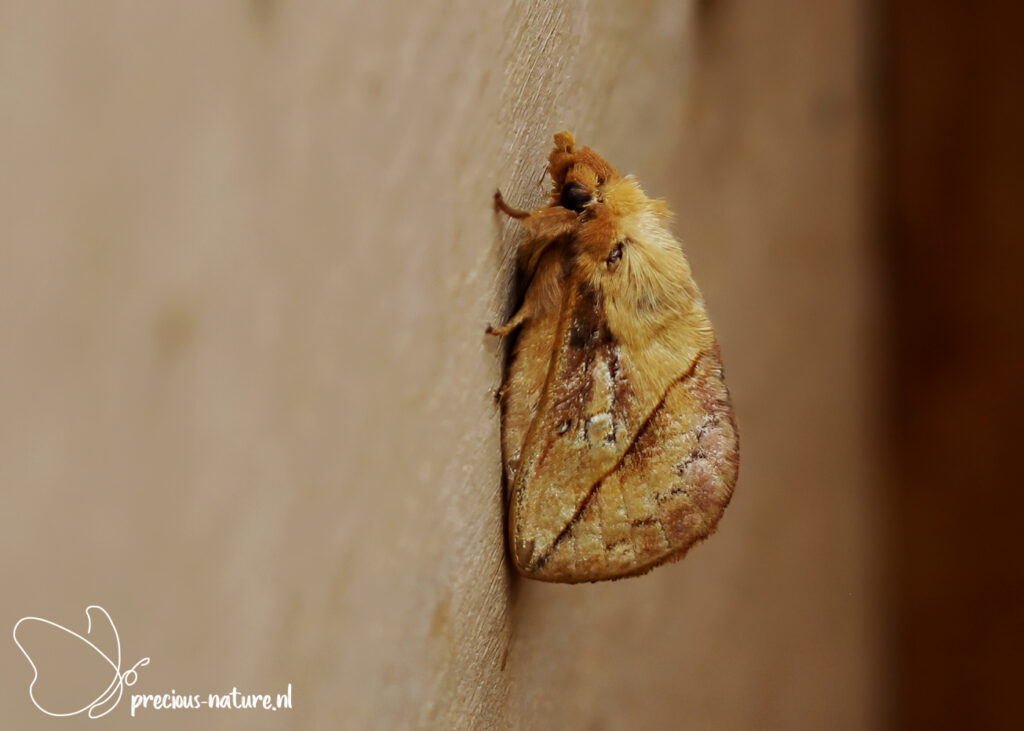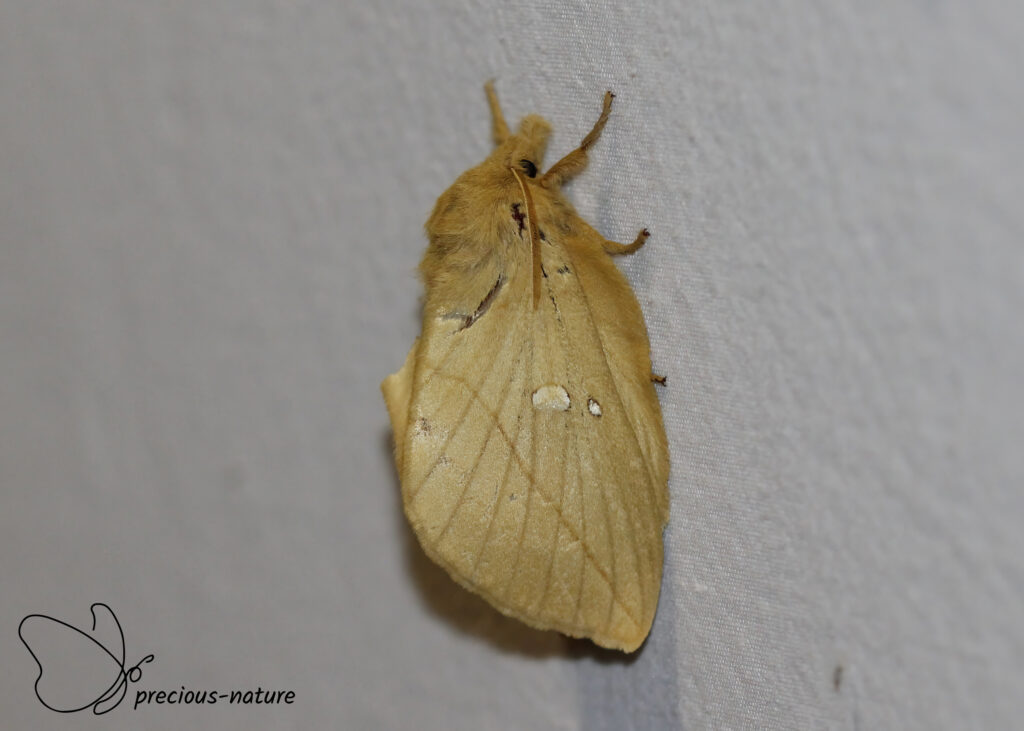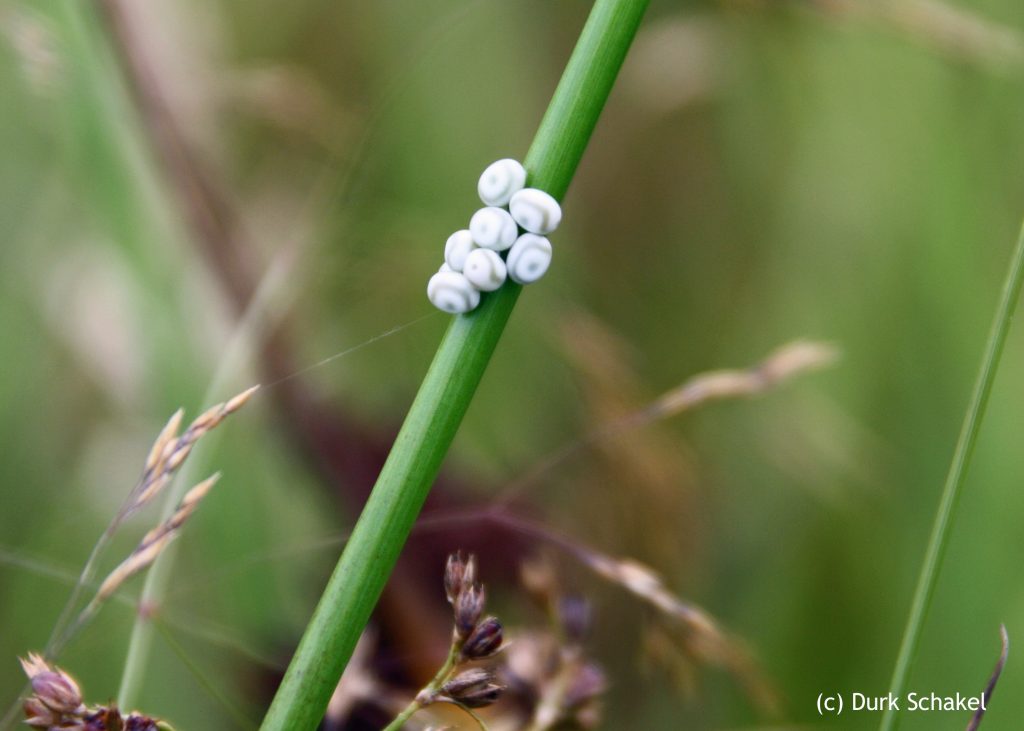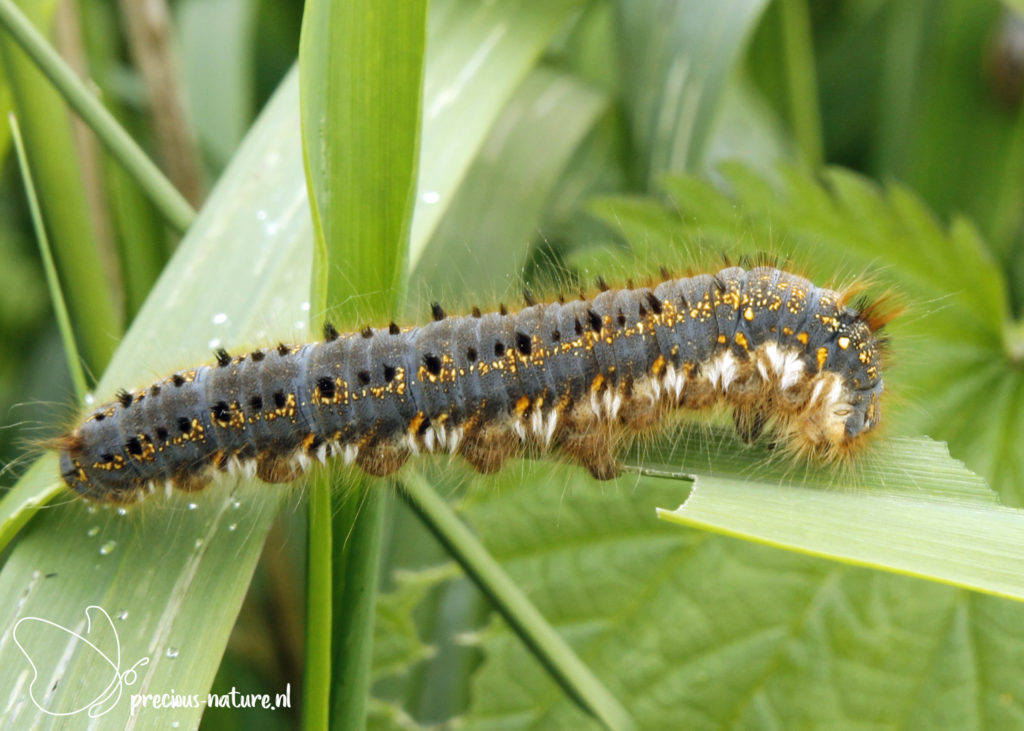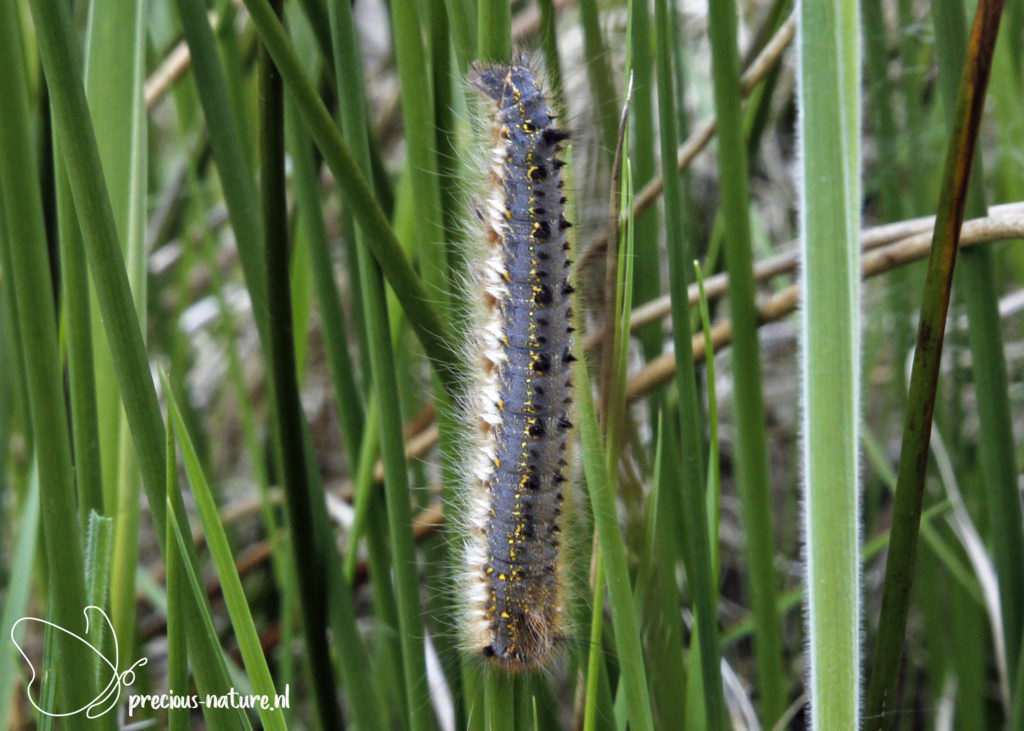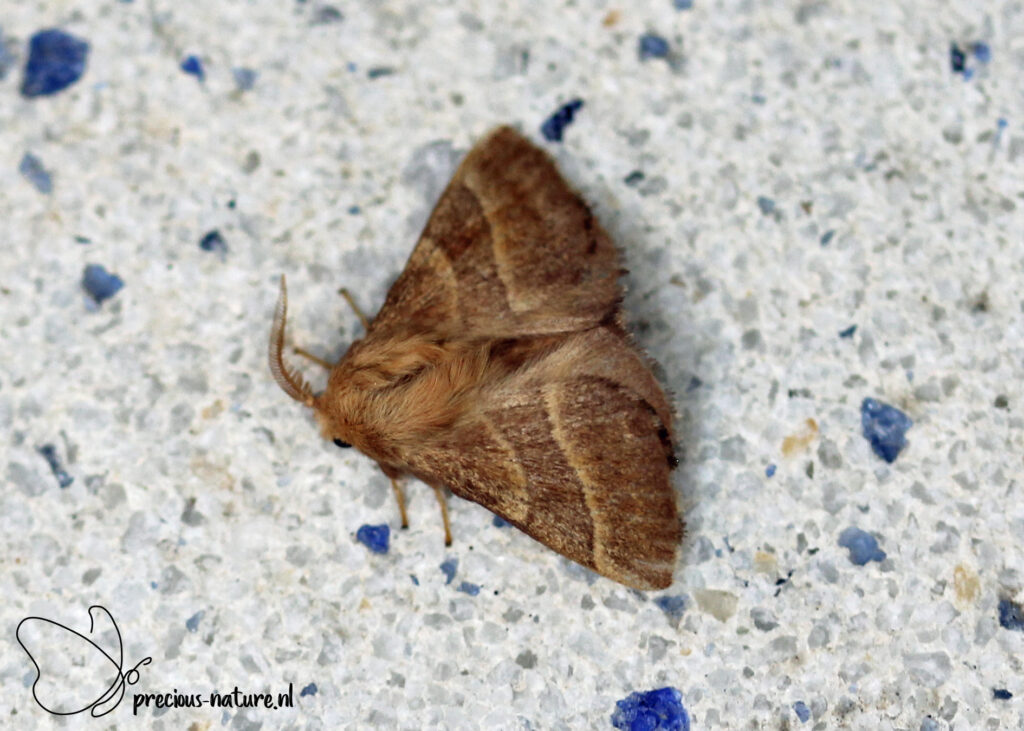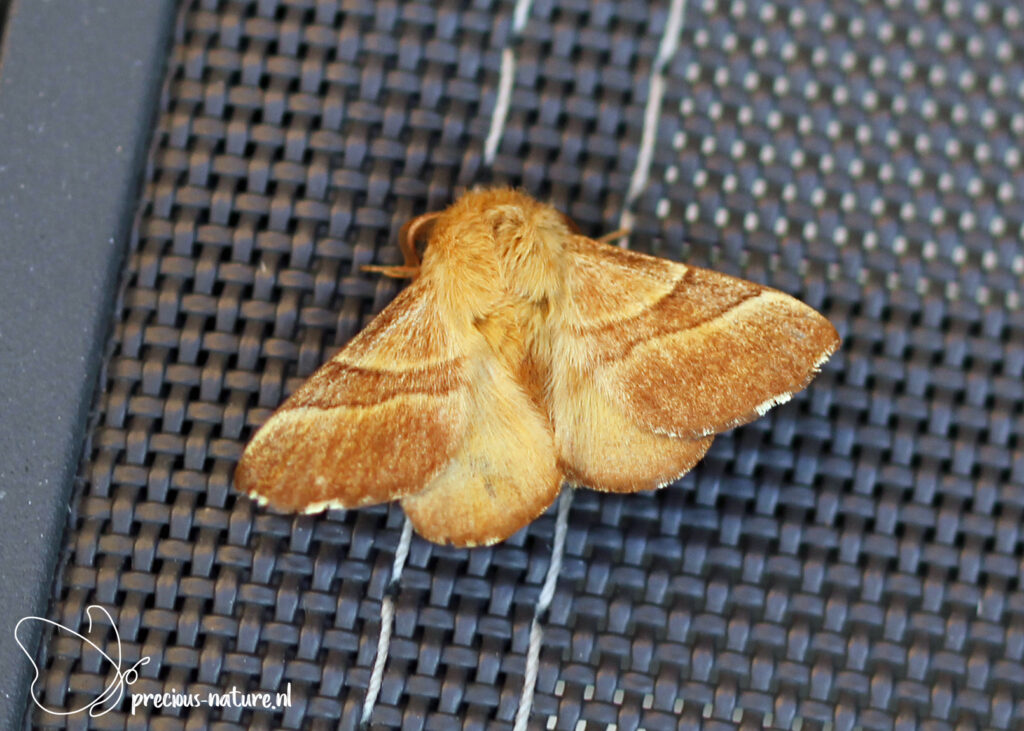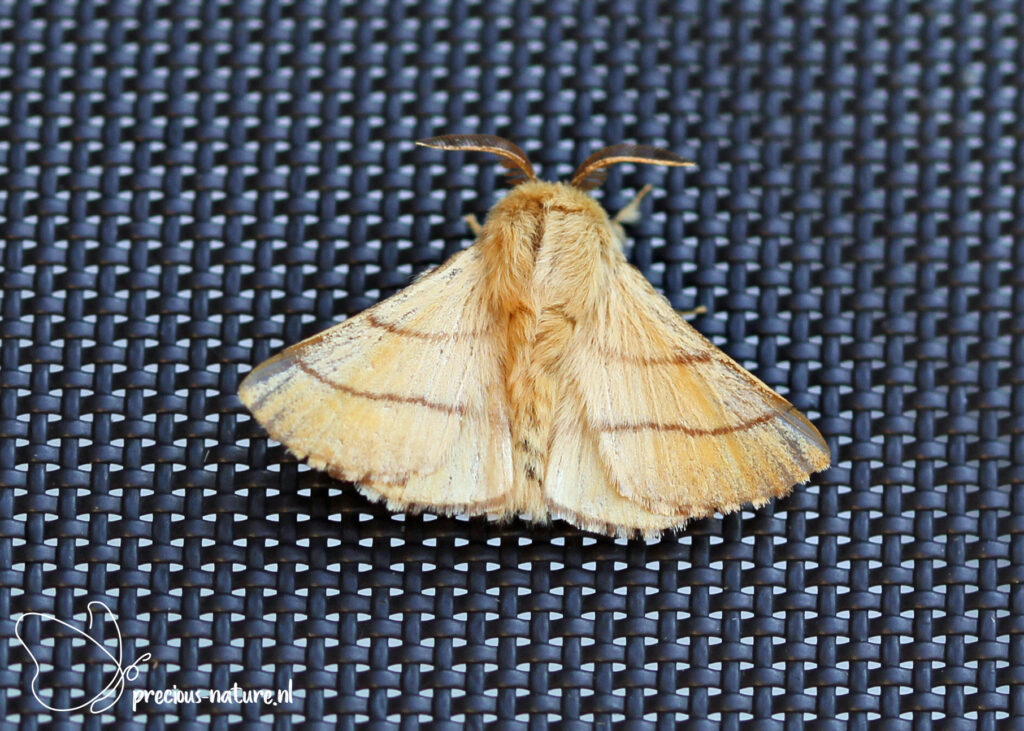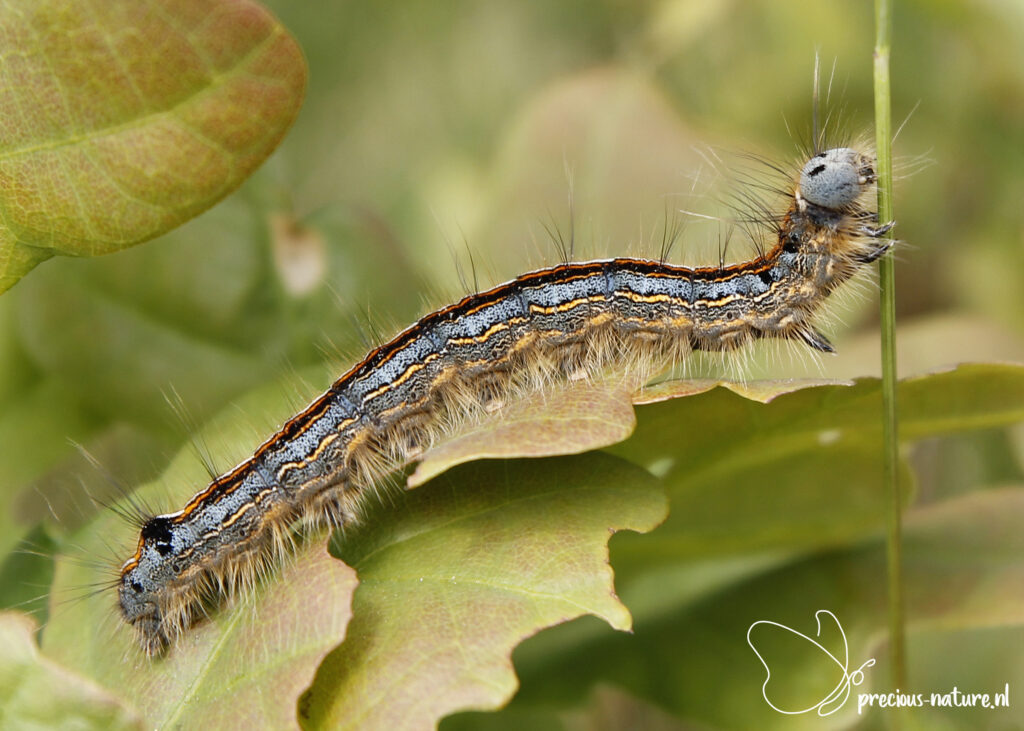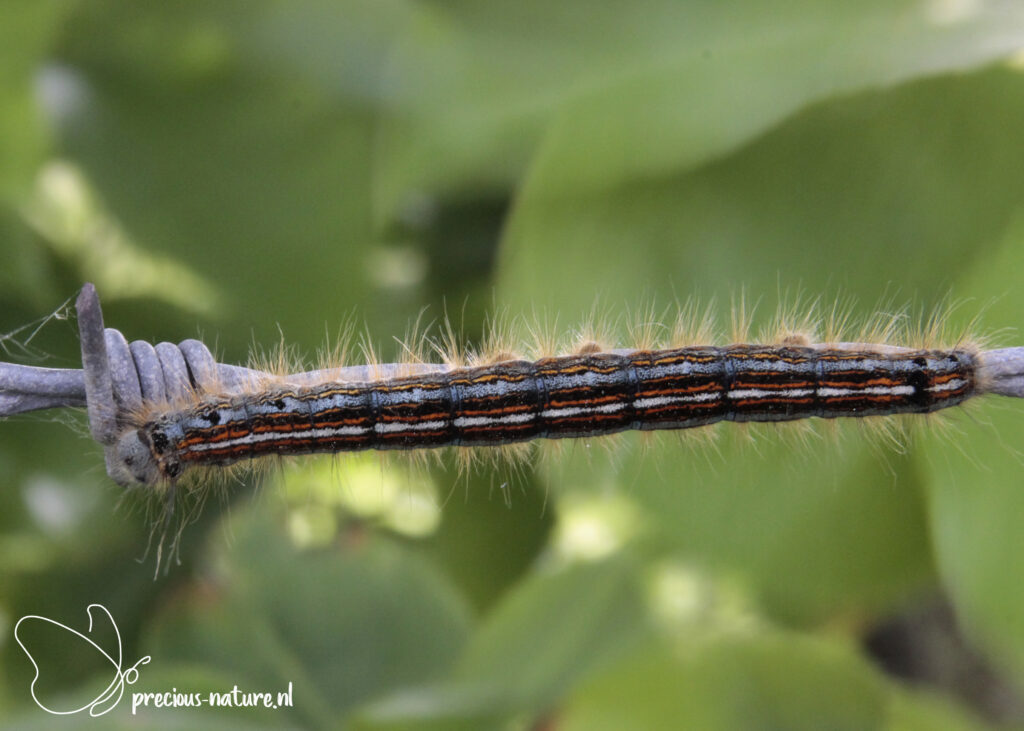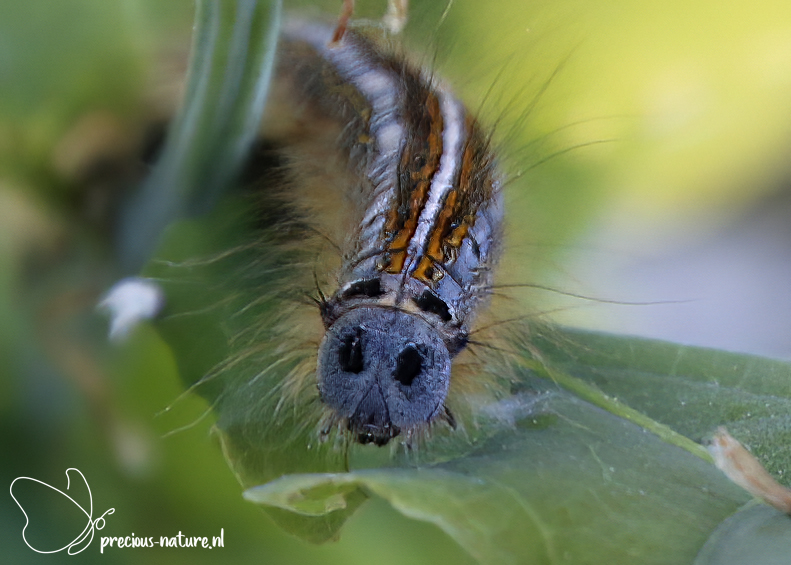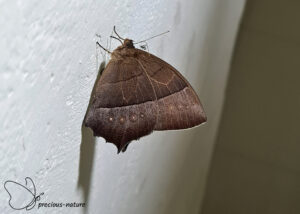Lasiocampid Moths (Lasiocampidae) are medium to large butterflies with hairy bodies. In resting position, these moths have their broad rounded wings like a roof over their body. It is striking that the hindwing protrudes just below the forewing. As soon as these large moths are attracted to light, you can hear them clearly arriving at the last moment. Due to the rapid wing beat, they make a sound like a “spinner”.
Subfamily: Lasiocampinae
Genus: Dendrolimus
Pine-tree Lappet – 2023 (BE)
(NCBI-index: 151304)
The advantage of taking the moth trap with you when you go to the Belgian Ardennes is that you catch species that are quite rare in the Netherlands and are quite common there. This also applies to the Pine-tree Lappet (Dendrolimus pini). This is a variable lasiocampid moth, especially the males, which is nevertheless easily recognizable. However, for the specimen that flew off and was in my moth trap, I had to look carefully for the correct identification. An important identification point is the striking white center spot on the otherwise brown-tinted forewing. The forewing includes an irregular toddy scalloped wavy line and a characteristic pattern of reddish brown and grey bands. The Pine-tree Lappet larva can be fatal for pine trees. The larva feeds on the needles, but also shoots and buds, causing extensive defoliation. Severe or repeated defoliation can lead to tree death. The flight period is from mid-May to mid-August in one generation and the wingspan is 45-70mm. Host plant: Scots pine. Dutch name: Dennenspinner. Frisian name: Dinnespinder.
Flying period:

Subfamily: Lasiocampinae
Genus: Euthrix
Drinker Moth – 2017 (NL)
(NCBI-index: 624169)
The Drinker Moth (Euthrix potatoria) is not the moth that I expected in my garden as there are few reed collars in the immediate area. Males come to light more often than females. They have a remarkable snout due to their strongly hairy palps. Furthermore, the Drinker Moth has at the yellow-brown forewing next to the white median spot an extra small white spot. A wavy line can be seen in the marginal area just before a brown cross line running towards the apex. The females are larger and can vary in color from deep yellow to very pale buff, whitish, or a darker reddish-brown similar to the males. The flight period is from June to August in one generation and the wingspan is 42-70mm. Host plant: Cock’s-foot, couches, Common Reed, Reed Canary-grass, and Wood Small-reed. Dutch name: Rietvink. Frisian name: Reidspinner.
Flying period:

Subfamily: Lasiocampinae
Genus: Malacosoma
Lackey Moth – 2023 (BE)
(NCBI-index: 7098)
I had often seen the colorful caterpillar in large numbers, but eventually, I got to see the adult of the Lackey Moth (Malacosoma neustria) for the first time in Belgium. The goal was to spend a few days walking around the Ardennes looking for butterflies, but I also brought the moth trap with me. The color of the wings varies from straw yellow to reddish brown and is often warmer in color in the male and somewhat pale in the female. Characteristic are the parallel inner and outer dark transverse lines on the forewing. The midfield can be darker than the rest of the wing and the seam field sometimes too. The fringes are brown and white checkered with two striking “reflective” extra large white blocks on the forewing. The hind wing has the same color as the fore wing. The flight period is in one generation from mid-June to early September and the wingspan is 25-32mm for males and 38-42mm for females. Host plant: blackthorn, hawthorn, oak. Dutch name: Ringelrups. Frisian name: Rinkjeflinter.
Flying period:


